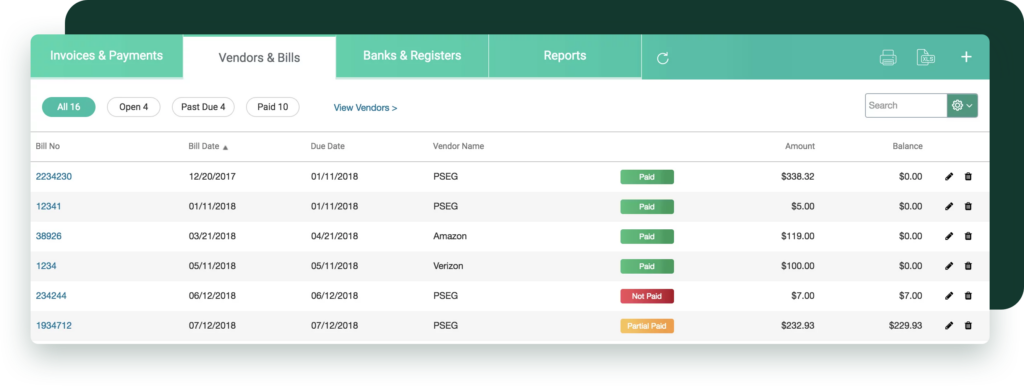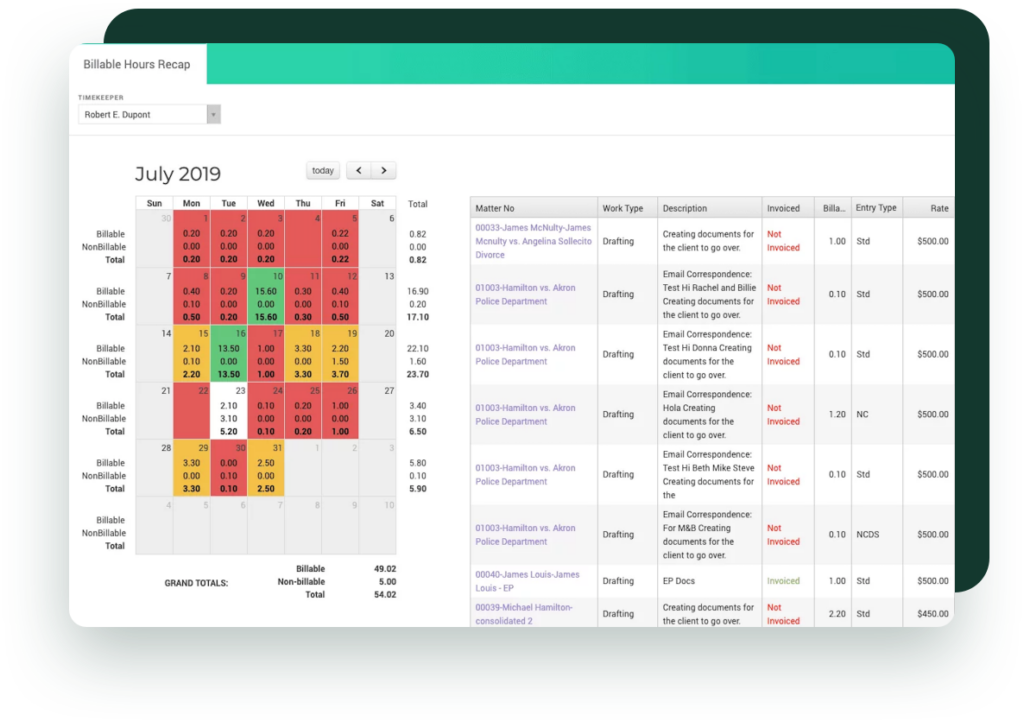The primary difference between flat fee and hourly billing lies in their predictability and their reflection of work complexity.
The primary difference between flat fee and hourly billing lies in their predictability and their reflection of work complexity. The legal industry, in recent years, has witnessed a seismic shift towards the adoption of “flat fee billing”, an alternative to the traditional “hourly rate billing.” This trend has emerged in response to client demands for greater predictability and transparency in legal costs.
Though both pricing models have their merits and drawbacks, the decision to choose one over the other is contingent on a variety of factors, unique to each law firm and case, including the exploration of various law firm pricing models.
Consider your firm as you think about the following:
- Case Complexity and Unpredictability: The more complex and unpredictable a case, the more suitable an hourly rate might be, to account for the potential extra time and expertise required.
- Client Preferences and Capacity: Understanding a client’s budget and their preference for budget certainty is important. Some clients prefer the predictability of a flat fee, while others are comfortable with an hourly rate that reflects work done.
- Law Firm’s Financial Structure and Business Model: Firms should consider how each billing model aligns with their financial goals, workload capacity, and overall business model, including the consideration of law firm fees to ensure competitive and fair pricing.

CARET Legal vendors and bills
Understanding Flat Fee Billing and Hourly Rates
The primary difference between flat fee and hourly billing lies in their pricing model, predictability, and their reflection of work complexity.
Flat Fee Billing
Flat fee billing is a model where a lawyer charges a single, fixed rate for a particular service or package of services. This approach is common for routine, predictable legal tasks, such as drafting simple wills or setting up LLCs.
You can use the following formula to calculate a flat rate price:
(Hourly rate * Hours of work) + (Materials cost * Markup percentage) = Total flat rate price
Decoding the World of E-Billing
Download our whitepaper Decoding the World of E-Billing for a detailed explanation on when to use LOC and LEDES billing, and more.

Hourly Billing
On the other hand, hourly rate billing is a more traditional model, where attorneys charge based on the time spent on a case. This model is often preferred for more complex, unpredictable cases that require an indeterminable amount of work.
Another common billing model is the contingency fee, where attorneys charge a percentage of the client’s settlement upon achieving a favorable outcome. This model is particularly popular in personal injury cases and offers accessibility for clients who may not afford legal services upfront, providing predictability compared to traditional hourly rates, especially in longer litigation processes.
Pros & Cons of Flat Fee Billing
Flat fee billing is most profitable for routine and predictable legal tasks, and has several key advantages:
- Financial Predictability for Clients: Clients appreciate the certainty of cost, which allows them to budget effectively for legal services. The client pays a predetermined amount, ensuring there are no unexpected expenses.
- Encourages Efficiency in Legal Processes: With a predetermined fee, law firms are incentivized to work more efficiently to maximize their profitability.
However, flat fee billing also presents challenges — There’s a risk of underestimating the amount of work a case might require, which could lead to a loss if the case becomes more complex or time-consuming than anticipated.
Pros & Cons of Hourly Billing
Hourly billing is generally more profitable for complex, or unpredictable cases. This allows for flexibility in billing as the case unfolds and evolves. Advantages include:
- Flexibility and Transparency in Cost for Work Done: Hourly billing allows clients to pay specifically for the work done, fostering transparency.
- Reflects Work Complexity and Expertise Required: Hourly rates can better accommodate cases that require specialized expertise or that become more complex over time.
- Contingency Fees as an Alternative: Contingency fees offer another flexible pricing model, especially for clients who can’t afford upfront payments. However, they come with their own set of challenges and ethical considerations, which vary depending on the legal context and state guidelines.
On the downside, clients may be wary of open-ended billing, fearing that costs could spiral. Furthermore, it requires meticulous tracking and justifying of billable hours. By using automation to enhance accuracy, save time, promote transparency, and enable flexible billing models, firms can modernize their operations, meet the evolving expectations of their clients, and ensure their practices remain competitive.
Choosing the Right Billing Model
Selecting the right billing model helps law firms receive appropriate compensation for their services while also aligning with client expectations. With multiple approaches available, firms should weigh several factors to find the most suitable fit.
Factors to Consider
Choosing a billing model requires thoughtful consideration of multiple elements that influence both client satisfaction and firm sustainability:
1. Type of Services Offered
Different billing approaches suit different types of legal work. Flat fees may work well for standardized tasks—such as drafting contracts or managing routine filings—where the scope is predictable. In contrast, hourly billing may be better suited for complex matters involving extensive research, negotiations, or court appearances.
2. Client Needs and Expectations
Understanding how your clients prefer to engage financially can guide your selection. Some may favor the clarity of a fixed price, which allows for easier budgeting. Others may be more comfortable with hourly billing, especially if the work scope is uncertain or likely to change over time.
3. Firm’s Strategic Direction
Your broader business objectives should shape your approach. If the focus is on maximizing returns for time-intensive matters, hourly billing may be more appropriate. If the goal is to strengthen client relationships or offer predictable pricing, flat fee or hybrid structures may be worth exploring.
4. Market Landscape
Being aware of current pricing trends within your practice area and geographic market can help keep your services aligned with client expectations. A billing structure that reflects common practices can make your firm more approachable to prospective clients.
5. Firm Size and Operations
The internal capacity of your firm may also influence what’s feasible. Smaller firms may benefit from simpler models that are easier to manage, while larger firms may be equipped to offer more customized arrangements that reflect a broader range of services and client needs.
Setting a Fair and Reasonable Price
Establishing rates that reflect the value of your work, while supporting the financial wellbeing of the firm, requires a balanced and informed approach. Consider the following:
1. Time and Effort
Estimate the level of work involved, taking into account case complexity and duration. This helps provide a realistic baseline for pricing and planning.
2. Experience and Skill Level
The professional background of the attorneys involved is a relevant factor. Services delivered by experienced practitioners with specialized expertise often warrant higher pricing.
3. Value to the Client
Consider the impact your work will have on the client’s circumstances. Legal solutions that resolve significant issues or carry lasting benefits may justify higher fees.
4. Market Comparisons
Look to comparable firms in your area to understand common pricing benchmarks. Staying within a reasonable range can help position your firm competitively.
5. Operational Costs
Your pricing should reflect the financial realities of running your practice. Factoring in overhead, staffing, and technology costs helps maintain stability and growth over time.
Putting a Billing Model Into Practice
Moving forward with a billing model requires deliberate steps and strong communication:
- Clarity with Clients: Be specific about how charges will be applied, what services are covered, and how fees will be calculated. Clear expectations help avoid misunderstandings and build confidence.
- Leverage Tools to Support Billing: Legal practice management systems with built-in billing features can simplify everything from time tracking to invoice delivery. These tools reduce administrative burdens and improve billing accuracy.
- Ongoing Evaluation: Once implemented, revisit your billing approach periodically. Assess its impact on client satisfaction, cash flow, and firm performance. Adjustments may be needed as client profiles, practice areas, or staffing evolve.
By taking a structured, client-aware approach to billing, law firms can maintain financial stability while strengthening client relationships. A well-matched billing model supports both the quality of your legal work and the long-term sustainability of your practice.
By using automation to enhance accuracy, save time, promote transparency, and enable flexible billing models, firms can modernize their operations, meet the evolving expectations of their clients, and ensure their practices remain competitive.
Hybrid Billing Software
For many firms, implementing hybrid billing strategies — a blend of flat fee and hourly billing — can offer a flexible, client-centric approach that addresses diverse case needs. In a hybrid billing model, certain elements of a case may be billed at a flat rate, while others are billed hourly.
For example, a law firm might charge a flat fee for routine, predictable tasks such as drafting standard documents or performing due diligence. In contrast, for more complex tasks such as negotiations or court appearances, which could vary significantly in terms of time and effort, the firm might charge an hourly rate. Additionally, subscription services can be offered as another flexible billing option, providing clients with various plans that include unlimited consultations or access to online tools and resources.

View billable hours with CARET Legal’s Billable Hours Recap report
This hybrid approach to law firm billing has a few advantages:
- Financial Predictability and Flexibility: The hybrid model combines the financial predictability of flat fee billing (for certain tasks) with the flexibility of hourly billing (for more complex or unpredictable tasks). This combination can satisfy clients who want cost certainty for some parts of their case, while also ensuring the law firm is compensated fairly for tasks that require more time or expertise.
- Client Satisfaction: By offering a billing model that aligns more closely with client preferences and the nature of the work performed, law firms can increase client satisfaction, leading to stronger client relationships and potentially more business in the future.
The hybrid model is customizable, but implementing it requires careful planning and communication. It’s essential to clearly define which tasks are billed at a flat rate and which are billed hourly. This transparency helps maintain trust with clients and prevents misunderstandings about billing down the line. Technology can also be a great ally in managing hybrid billing, with many legal billing software solutions offering features that support this model.
Automation is the Future of Legal Billing
The data gathered from their legal practice management tools is influencing the way firm’s approach billing and payments. Automation tools:
- facilitate easier time-tracking and transaction management, and provide a high level of accuracy — eliminating manual errors that can occur with traditional billing methods.
- provide transparency in the billing process. Modern legal billing and accounting software can provide detailed breakdowns of charges, including legal fees, which can be easily shared with clients. This transparency not only strengthens client-lawyer relationships but also reduces the likelihood of disputes over billing.
- save valuable time. Instead of spending hours manually calculating fees, tracking hours, or generating invoices, firms can let the automated system handle these tasks efficiently. This means more time can be spent on client work and less on administrative tasks.
By using automation to enhance accuracy, save time, promote transparency, and enable flexible billing models, firms can modernize their operations, meet the evolving expectations of their clients, and ensure their practices remain competitive.
